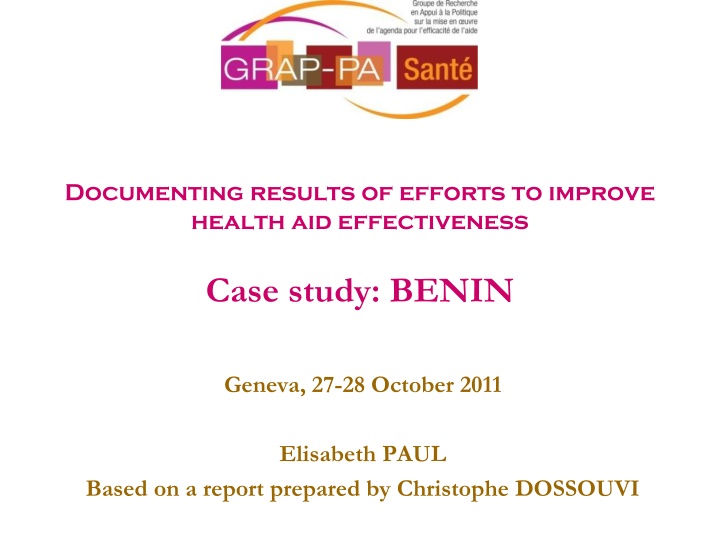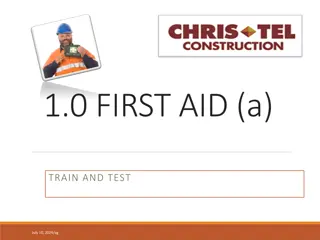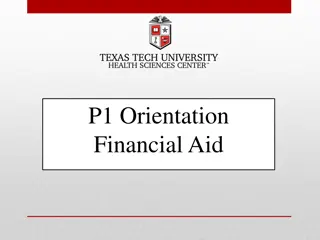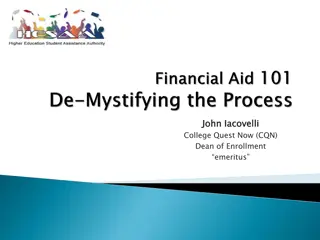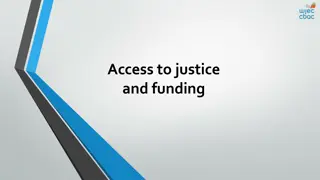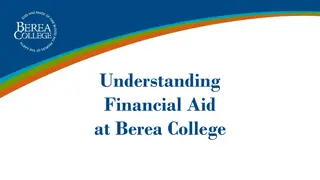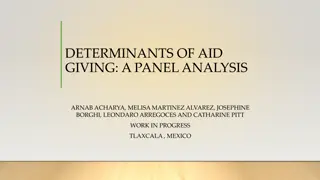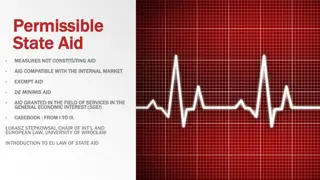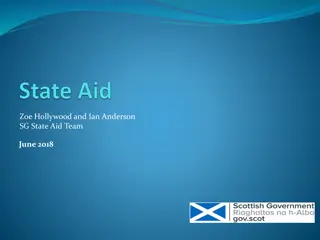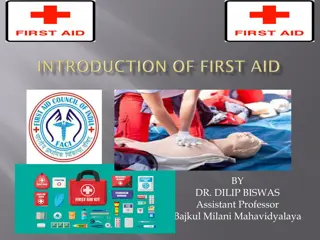Enhancing Health Aid Effectiveness in Benin: Documenting Results
This case study examines efforts to improve health aid effectiveness in Benin, focusing on challenges such as low economic growth, weak budget execution, and the impact of external funding on the health sector. It evaluates the implementation of aid effectiveness principles, donor coordination, and the progress in improving health outcomes. The analysis highlights the need for enhanced collaboration, alignment with national strategies, and effective monitoring and evaluation to achieve better results in health aid effectiveness.
Uploaded on Mar 08, 2025 | 1 Views
Download Presentation

Please find below an Image/Link to download the presentation.
The content on the website is provided AS IS for your information and personal use only. It may not be sold, licensed, or shared on other websites without obtaining consent from the author.If you encounter any issues during the download, it is possible that the publisher has removed the file from their server.
You are allowed to download the files provided on this website for personal or commercial use, subject to the condition that they are used lawfully. All files are the property of their respective owners.
The content on the website is provided AS IS for your information and personal use only. It may not be sold, licensed, or shared on other websites without obtaining consent from the author.
E N D
Presentation Transcript
Documenting results of efforts to improve health aid effectiveness Case study: BENIN Geneva, 27-28 October 2011 Elisabeth PAUL Based on a report prepared by Christophe DOSSOUVI
Context Low economic growth and budget execution rates Positive evolution of ODA (22% of P.E.), but weak quality of data on executed external funding Proportion of health in the budget has stagnated over the past 10 years; State budget allocation reduced in 2011 External funding accounts for of health budget Health sector coordination framework still not very well defined / organized; little effective fora for donor-MoH policy dialogue (2 meetings/year + annual performance review) no real health SWAp NHP = PNDS 2009-2018, PTD 2010-2012 Benin joined IHP+ in 2009, signed national Compact in November 2010 with 5 donors but some important pillars of the Compact were lacking: coordination, M&E and fiduciary frameworks not defined 28 October 2011 2
Q1: To what extent have aid effectiveness principles been put into practice? Donor coordination and joint reviews, but no real SWAp before IHP+ progress is recent Progress in ownership of national strategies at central level but implementation problems Leadership is lacking (governance problems) Some alignment on national strategies: PNDS/PTD Much less alignment with national public financing and procurement systems (not reliable) Recent progress in harmonization: joint HSS platform (WHO, WB, GFATM, GAVI + BTC) >< yet, risk to weaken the more global Compact process M&E / PNDS performance plan recently developed Little progress in MfDR (OK theoretically but not in practice; PBF is starting on a large scale) and mutual accountability 28 October 2011 3
Q2: Has this helped to improve results? Results 1: Has aid effectiveness actually improved? Growing external funding for health, but decrease in State budget allocations to health in 2011 + low execution rates Predictability of aid is very limited (+ difficulty for the GoB to collect information) IHP+ Compact & search for effectively implementing it renewed impetus to collaboration between donors Joint HSS platform reduction in transaction costs + first step towards joint financing agreement in the health sector (no pooling but common PIU + procedures) More coherent support to HSS and distribution of districts between donors 28 October 2011 4
Q2: Has this helped to improve results? Results 2: Has the health system been strengthened? Participative process consensus over the PNDS/PTD; yet, still misgovernance Various problems associated with financing (allocation / execution + underperforming PFM) Good coverage of infrastructures Public sector HRH coverage has deteriorated in recent years + regional disparities Better organization of the drug/med.product sector Still quality problems of data provided by NHIS; new M&E plan should drive improvements 28 October 2011 5
Q2: Has this helped to improve results? Results 3: Have health services improved? Performance still unsatisfactory against targets, yet some progress has been recorded in recent years, specifically MCH indicators which are at relatively high levels: Sharp reduction in MMR (224 HIV/AIDS preval., pregnant women (2.2% Rise in HF consultation rate (38% Stagnation of some indicators (ANC1 94% in 2010; ANC4 61% in 2006; assisted deliveries 80% since 2001) Inadequate neonatal care Overall: progress in outcomes, but not systematically linked to (weak) public-sector performance enormous contribution towards achieving the MDGs in Benin 137, 2003-2008) 1.7%, 2003-2007) 46.8%, 2003-2010) private sector has made an 28 October 2011 6
Q3: Decisive factors and constraints overcome Main factors contributing to achievement of results: Coordination of donors (even if imperfect) Participative preparation process of PNDS 2009-2018 Annual sector performance reviews Thematic working groups & coordination at national level IHP+ new momentum to the sectoral approach / MDGs Search for ways to implement the Compact in practice, especially through the HSS platform collaboration among a core group of donors Progress at process level, that are expected to yield progress at results level strengthened 28 October 2011 7
Q3: Decisive factors and constraints overcome Main constraints: Lack of MoH leadership + misgovernance of the sector Maladjustments in the sectoral coordination framework + problems with quality and analysis of data precluded ongoing and priority-focused policy dialogue often had to take the initiative to get projects moving MoH lost technical & financial support with WB/EC GBS Heterogeneity of donors no single voice towards MoH IHP+ process itself constrained by: Weak leadership and ownership of MoH (except DPP) Nonexistence of a sectoral approach before number of undefined basic components (fiduciary, coordination and M&E arrangements) delayed implementation HSS platform reluctance of some other partners, and risk to weaken the more global Compact process Recurrent strikes and insufficient resources at operational level have to date donors Compact with a 28 October 2011 8
Conclusion and perspectives IHP+ & Compact sectoral approach, giving substance to aid effect. principles Yet, as certain basic components of the Compact were not defined when the document was signed, it has taken some time before being translated into practice HSS platform initiated by donors: First concrete step to harmonization (alignment seems not possible so far) Possible nucleus for implementing the Compact if extended to the whole PNDS + all donors To date, the results of putting aid effectiveness principles into practice are noticeable only at the process level, but promising outlook in terms of results provided improved MoH governance, relaunch of policy dialogue & HSS 28 October 2011 undeniably acted as a catalyst for a 9
